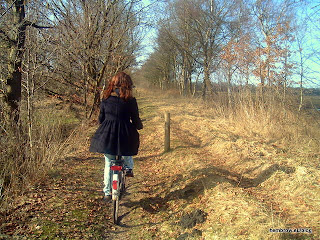There are now a variety of different types of countdown timer used on cycle path traffic lights in the Netherlands. This is one example from Assen. Update: In 2016 this junction was transformed in a way which made it far less convenient and more dangerous for pedestrians and cyclists.
And another from Groningen. They're not limited to just these two examples, nor to these two cities, but are appearing all over the country as crossings are upgraded.
It's very useful to have an indication like this of when the lights will turn green. You know to regulate your speed as you approach the traffic light, so can ride more efficiently.
The bridge in Assen was featured on the blog before, when I used the example of the one-way streets into which it leads. The example in Groningen heads towards the main railway station, which has also been covered before.
Both of these sets of traffic lights also illustrate two other very important things:
- Traffic light cycle times for cyclists are short. This leads to a low average delay for cyclists at these points, often lower than the average delay for drivers. This increases the competitive advantage of bikes over cars.
- Permeability for cyclists. In both cases in these videos, we're crossing in a direction where motorists can't also drive, meaning that cyclists get more direct routes. Again, a competitive advantage for bikes over cars.
Not the same as London and New York
Please note that these timers are installed for exactly the opposite reason to those recently installed in London, where similar technology has been used to make pedestrians walk faster in order to reduce delays to drivers, a rather unpleasant idea which Britain imported from the USA. The Dutch use this technology to help cyclists and pedestrians, not to hinder them. It's another good idea seemingly "lost in translation".
There are several other posts showing how traffic lights in the Netherlands don't unduly hinder cyclists.
















